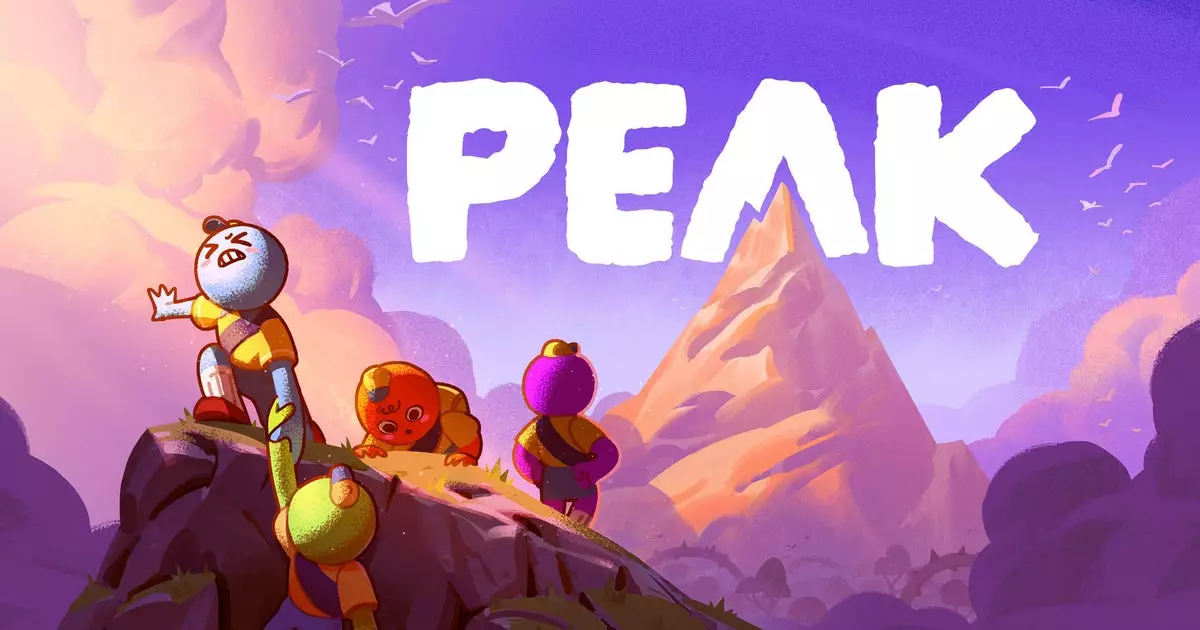In the world of video game development, innovation often springs from the most unconventional sources. Enter “Peak”—a co-op mountain climbing game that exemplifies how creative ambition can flourish in the absence of traditional constraints. While most games are the result of meticulous planning and lengthy production timelines, Peak was birthed from spontaneity and a spirit of collaboration among developers from different backgrounds. The story of its creation reflects a blend of humor, competition, and joy, showcasing not only the product but the journey that made it possible.
From Jealousy to Inspiration: The Driving Force Behind Peak
As revealed by Nick Kaman, head of Aggro Crab—the studio behind the acclaimed title “Another Crab’s Treasure”—the inspiration for Peak was fueled by a touch of jealousy. Upon discovering that Landfall’s “Content Warning” was developed during a similar game jam and quickly saw success, the Aggro Crab team felt a stirring challenge. Kaman articulated that such unexpected success reshaped their understanding of game development. It was a testament to the fact that creativity doesn’t always require endless resources or years of toil; sometimes, it thrives in a hasty, collaborative environment where the focus lies more on shared experiences than on profit margins.
The message is clear: competition can spark creativity. One team’s breakthrough ignited a desire in another to push the boundaries of their own creativity. This scenario challenges the myth that great games are made solely through extended periods of development, instead illustrating the value of creative community dynamics.
Isolation and Collaboration: The Power of a Game Jam
The decision to participate in the game jam in Korea was pivotal for both teams. Upon arrival, the developers set the tone for their creative retreat by assembling their workspace, which surely mirrored their approach to game-making—strategic yet chaotic. The picture of them rushing to IKEA is symbolic; it encapsulates a drive to establish a functional environment conducive to creativity, even amidst the pressure of a strict timeline. Their month-long immersion, filled with brainstorming sessions and culinary adventures, fostered deeper camaraderie and led to innovative ideas for Peak.
It is this environment of shared passion that allows for the kind of gameplay experience Peak offers today. The game isn’t just about climbing mountains; it’s about the relationships you build while grappling with challenges alongside friends, overcoming both literal and metaphorical peaks. The developers emphasized that the core of the experience isn’t only in the game mechanics but in the invaluable moments of connection between players.
The Evolution of an Idea: From Vagueness to Clarity
Interestingly, the initial concept for Peak’s gameplay was conceived in a hot tub in Sweden—a setting typical for brainstorming brainstorming sessions among friends but atypical for video game development. The early notion was nebulous and more akin to an open-world survival game. However, as the team collaborated, they began to hone in on a much more focused narrative: a group of lost scouts navigating a mountain landscape filled with whimsical obstacles and slapstick humor. This metamorphosis highlights an important lesson: clarity does not always need to precede creativity, and sometimes it can emerge organically through collaboration and discussion.
It also reinforces the idea that creativity is fluid; it changes in response to the contributions and perspectives of everyone involved. The importance of dialogue and open-minded collaboration cannot be overstated, as it can reveal exciting avenues for exploration that may not have been conceived in isolation.
Shared Success: Lessons from Peak’s Journey
Despite being produced in a mere month, Peak went on to achieve commercial success—an outcome that is both impressive and misleading. It serves as a reminder that while some are keen to emulate the apparent shortcut that Peak represents, success is ultimately the result of accumulated experience and learned skills. Both Aggro Crab and Landfall came equipped with years of knowledge, which they applied creatively. Thus, aspiring developers should recognize that the formula for creating a successful game is not simply copying the conditions that led to Peak’s creation, but rather integrating one’s unique influences and insights while fostering collaborative energies.
The story of Peak challenges conventional wisdom about game development and highlights a refreshing new paradigm—one where collaboration, spontaneity, and joyful competition can coexist and spur remarkable outcomes. As the landscape of video games continues to evolve, it seems crucial that we embrace flexibility, innovation, and shared experiences, paving the way for future masterpieces.


Leave a Reply